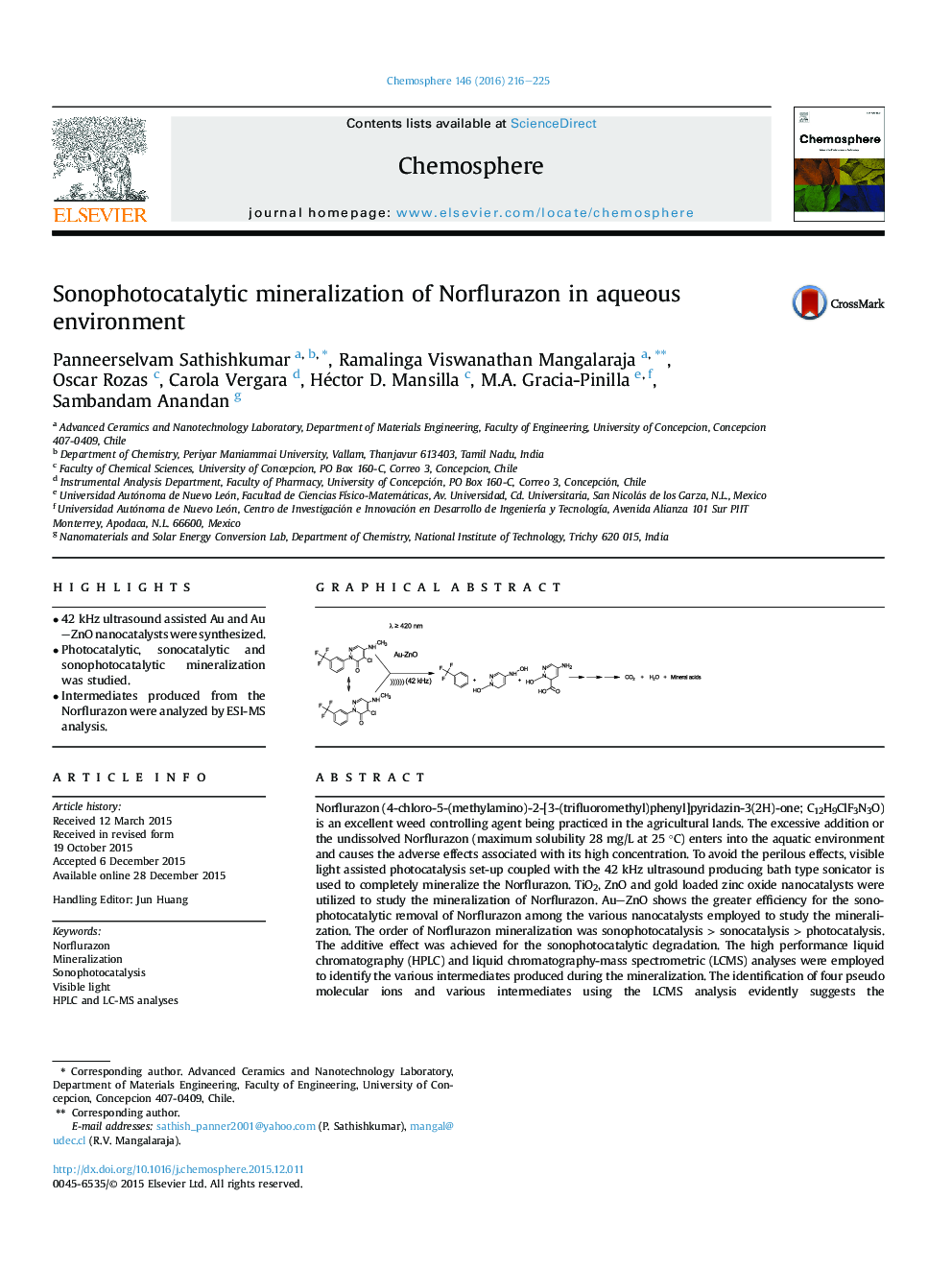| Article ID | Journal | Published Year | Pages | File Type |
|---|---|---|---|---|
| 4407977 | Chemosphere | 2016 | 10 Pages |
•42 kHz ultrasound assisted Au and Au–ZnO nanocatalysts were synthesized.•Photocatalytic, sonocatalytic and sonophotocatalytic mineralization was studied.•Intermediates produced from the Norflurazon were analyzed by ESI-MS analysis.
Norflurazon (4-chloro-5-(methylamino)-2-[3-(trifluoromethyl)phenyl]pyridazin-3(2H)-one; C12H9ClF3N3O) is an excellent weed controlling agent being practiced in the agricultural lands. The excessive addition or the undissolved Norflurazon (maximum solubility 28 mg/L at 25 °C) enters into the aquatic environment and causes the adverse effects associated with its high concentration. To avoid the perilous effects, visible light assisted photocatalysis set-up coupled with the 42 kHz ultrasound producing bath type sonicator is used to completely mineralize the Norflurazon. TiO2, ZnO and gold loaded zinc oxide nanocatalysts were utilized to study the mineralization of Norflurazon. Au–ZnO shows the greater efficiency for the sonophotocatalytic removal of Norflurazon among the various nanocatalysts employed to study the mineralization. The order of Norflurazon mineralization was sonophotocatalysis > sonocatalysis > photocatalysis. The additive effect was achieved for the sonophotocatalytic degradation. The high performance liquid chromatography (HPLC) and liquid chromatography-mass spectrometric (LCMS) analyses were employed to identify the various intermediates produced during the mineralization. The identification of four pseudo molecular ions and various intermediates using the LCMS analysis evidently suggests the sonophotocatalytic degradation was preceded in various decay pathways. A suitable mechanism has been proposed for the sonophotocatalytic mineralization of Norflurazon.
Graphical abstractFigure optionsDownload full-size imageDownload as PowerPoint slide
